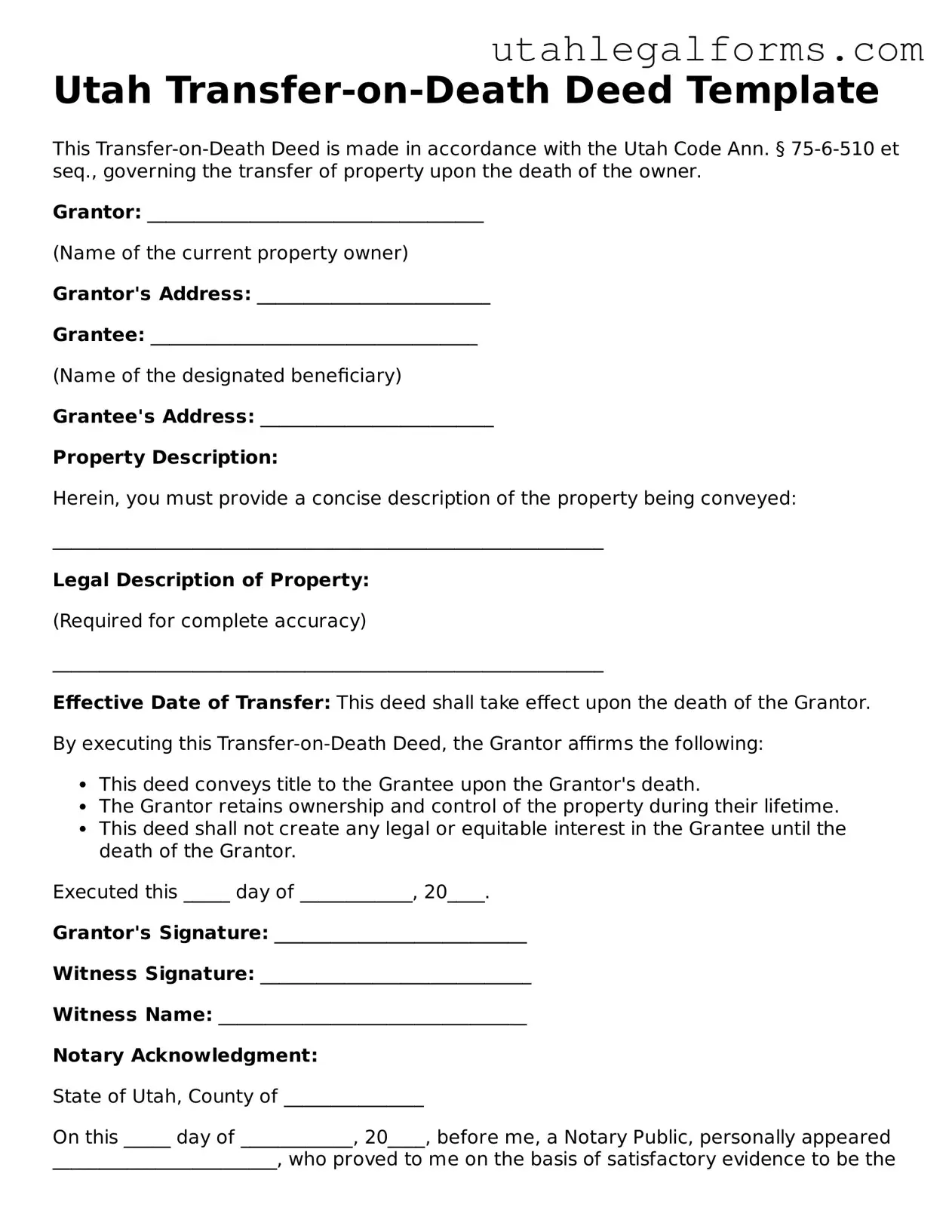Official Transfer-on-Death Deed Form for Utah State
The Utah Transfer-on-Death Deed form allows property owners to designate beneficiaries who will inherit their property upon their death, bypassing the lengthy probate process. This straightforward legal tool can provide peace of mind and simplify the transfer of assets. To get started with this form, click the button below.
Access Transfer-on-Death Deed Now
